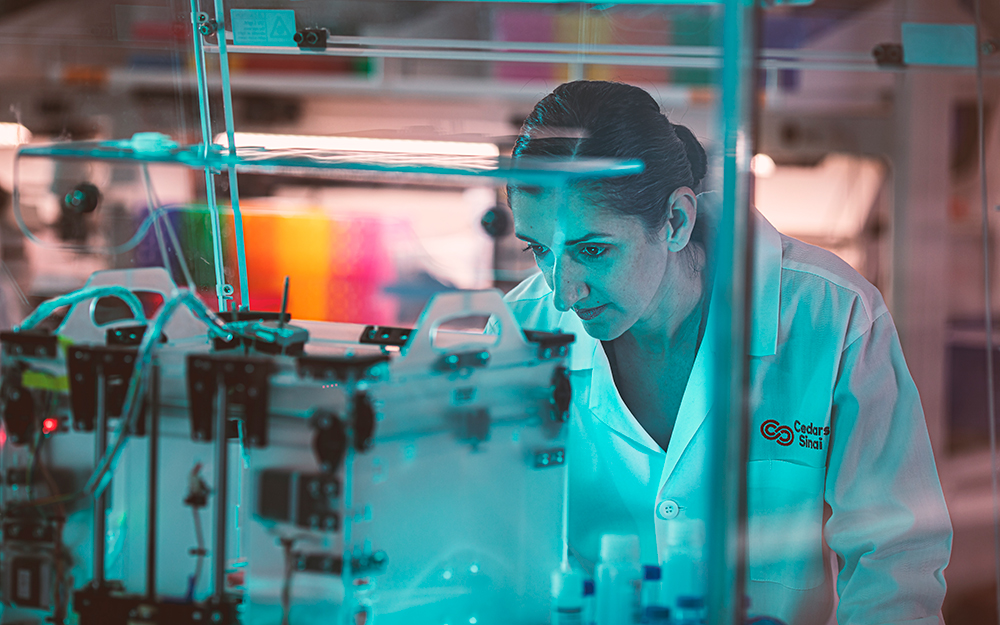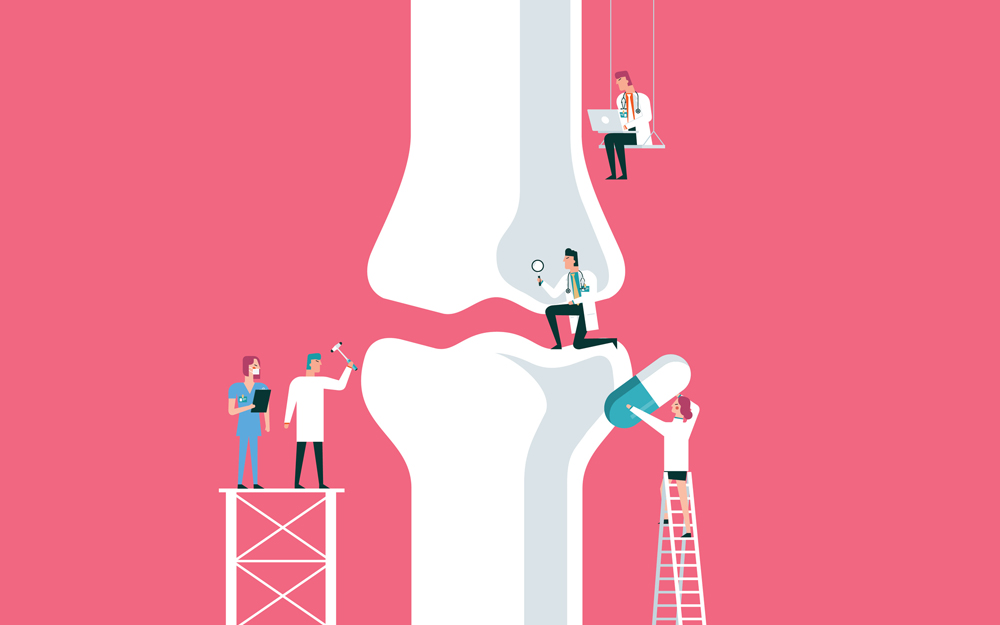New Spin on Spinal Discs
Date
October 12, 2020
Credits

Date
October 12, 2020
Credits
Medical providers featured in this article
In Brief
{{cta-block}}
Approach uses stem cell technology to prevent degeneration of spinal discs.
Cedars-Sinai investigators have successfully used stem cell technology to halt spinal disc degeneration in laboratory animals. The project could potentially alleviate back pain in people with the condition, which strikes when the discs between the vertebrae of the spinal column deteriorate. A frequent cause of disability, spinal disc degeneration afflicts hundreds of millions worldwide.
“There is an urgent need for an alternative treatment such as stem cell therapy, which is focused on correcting the underlying basis of the disease,” says Dmitriy Sheyn, PhD, who heads a laboratory focusing on orthopaedic stem cell research at the Cedars-Sinai Board of Governors Regenerative Medicine Institute.
The team focused on notochordal cells, which are responsible for the formation and maintenance of spinal discs. Previous studies have associated dwindling numbers of notochordal cells with degenerative disc disease.
Replacing the cells is a challenge, explains Zulma Gazit, PhD, the study’s senior author and co-director of the Skeletal Regeneration and Stem Cell Therapy Program at the institute. “We lack an appropriate cell source—one that can be compatible with the harsh environment in which these cells live, yet is safe and sufficiently available,” she says.
To overcome this hurdle, the team took samples of human cells that form the skin’s connective tissue and then engineered them into induced pluripotent stem cells, which can morph into specialized cell types.
The research holds potential for combating disc degeneration, Sheyn notes.



